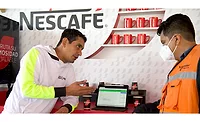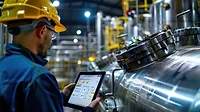Packaging
Making a case for aluminum trays in ready meal manufacturing
Some aluminum trays are microwavable and easy to clean to meet recycling requirements

When you buy an RTE meal today, most often it’s not in an aluminum tray. If you’re conscientious about recycling, you probably think, "here’s another unrecyclable piece of plastic"— because once you heat it in the microwave, you can’t clean the tray well enough to recycle it.
What’s the solution? Well, there’s the old standby—aluminum. Aluminum is highly recyclable—aluminum soda and beer cans have been around for a long time, and they’re standard recyclables. And, an aluminum tray is pretty easy to clean once it’s been used. But really, put an aluminum foil tray in the microwave?
If you’re a RTE food processor, why would you consider aluminum trays for your products? Based in the UK, Advanta is an international supplier of aluminum foil containers, and has several tray products. FE asked Miguel Campos, export sales manager, why aluminum trays are worth consideration for a processor’s tray-based products.
FE: Isn’t making the transition from plastic expensive, considering different packaging equipment may be necessary?
Campos: Today’s consumer is more environmentally conscious than ever before. We all know the arguments against plastic, but transitioning to a recyclable material, such as aluminum, can feel like a giant leap of faith.
Luckily, it can be a simple switch. There are identical aluminum equivalents to existing plastic packaging products, meaning you can use the same conveyors, machinery and processes as before. For example, a D13-50 plastic tray is an exact match to the CS-441465 aluminum tray, suitable for film sealing in the same way as its predecessor—all it requires is a higher temperature.
The upfront cost per unit of aluminum could be potentially higher than some kinds of plastic packaging; however, the return on investment comes from consumers opting for this material choice as an environmentally friendly option. Equally, the well-maintained scrap value of aluminum means food manufacturers have the opportunity to sell unused aluminum packaging back to their packaging suppliers.
FE: Regarding recycling, I think recycling is a plus. However, our trash company requires recycled aluminum products to be clean and not with baked-on food. This is true for plastics as well. So, I’m thinking that with my own experience, it’s much harder to clean baked-on foods in plastic oven containers than aluminum. But it all depends upon how motivated we are to recycle. So, in the case of baked-on plastic, we’re more apt to give up and throw it out. What is your thinking on this?
Campos: Aluminum gets its benefits from its endless recyclability, capable of being melted and reformed time and time again. The easy-to-clean properties you've experienced is definitely a bonus though! We appreciate recycling plants need clean materials to work with.
FE: Is any kind of pre-treatment required of aluminum pans prior to filling them with food? Any different than plastic?
Campos: There’s no pre-treatment requirement as aluminum pans manufactured in our BRC certificated factory are ready for food contact.
FE: What would be the cost differential between same size aluminum and plastic pans (in typical percentage)?
Campos: It’s a tricky question as plastic is not a homogenous material in packaging. It’s not the same price [as] an A-PET pan [or] a C-PET pan, although both will be seen by the consumer as “plastic.” The A-PET pans are merely holders of food (like the thermoformed pans), and C-PET pans are used for cooking or heating the food inside. Therefore, the end purpose of the two is different. We could consider then that aluminum pans and C-PET are the same kind of packaging as both are meant to be used for cooking or heating the food inside—even the features of both are very different. Taking that into account, C-PET pans and aluminum pans are not much different in price if not the same.
FE: What about microwaving an aluminum tray?
Campos: We’ve all been warned not to use metal in a microwave at one time or another, so you’d be forgiven for thinking all metal is strictly banned from the microwave. However, this isn’t the case. The United States Department of Agriculture (USDA) has a list of safe and unsafe containers for microwaving, as well as guidelines for cooking safely. It explains that food packaged in foil containers is safe to be microwaved.
As long as the lid is removed before cooking and the tray is not in contact with the walls of the microwave, using Advanta’s smooth-wall trays in a modern domestic oven is a perfectly safe cooking option. This means a foil tray ready meal can be marketed for its convenience, recyclability and its full range of cooking options.
FE: In terms of microwave cooking, would the considerations for cooking in a microwave be any different than plastic (e.g., percentage water, consistency, formulation, etc.)
Campos: No difference.
FE: Is pasteurization possible?
Campos: Pasteurization, drying, chilling, freezing, and modified atmosphere packaging (MAP) describe just some methods of food preservation. While longer shelf lives used to require packaging food with salt and preservatives, times have changed. Today, there are many methods to choose from.
Pasteurization for example, works by heating the food to specific temperatures for a certain period of time, killing the bacteria. The food is then refrigerated. Pasteurization is a great way to heat treat food, extending the shelf life considerably without compromising the food’s taste, aroma and nutritional values.
Challenges have occurred for manufacturers previously, in finding packaging that can withstand the high temperatures associated with this shelf life extension technique. Luckily, aluminum trays can be coated in a specially developed layer for heat-stability, able to withstand temperatures of up to 240° Celsius (464°F).
For more information:
Advanta, www.advantapack.com.
Looking for a reprint of this article?
From high-res PDFs to custom plaques, order your copy today!








